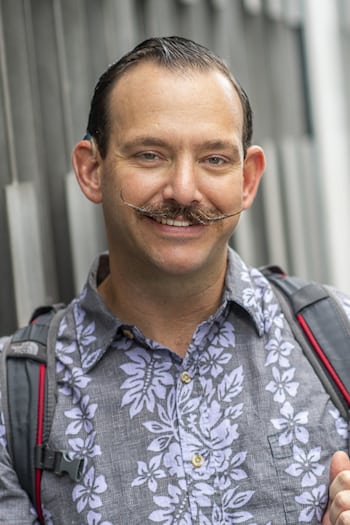
| Line 199: | Line 199: | ||
</a> | </a> | ||
</figure> | </figure> | ||
| − | |||
| − | |||
<h2>Protein</h2> | <h2>Protein</h2> | ||
| − | </ | + | </article> |
| + | |||
| + | |||
</div> | </div> | ||
Revision as of 16:53, 17 October 2018
ASL
After the STEM Camp was over, we decided to continue last years GSU teams effort for an ASL libraryof science terms specifically relating to synthetic biology. After scheduling a meeting with Scott D. Cohen, the director of the STEM camp, we spent two hours making signs for various terms such as plasmid or autoclave, and with the help of Scott, students were able to learn how to put words together in a way that would make sense in sign language. So, in order to make this task easier, we decided to break down some of those lengthy words, into more concepts based words. In this way people would get an idea of the actual meaning of the words.

“Sign Language is more concept based. When you see the word, you learn what it means. We break the words up and the meanings, to get to the concepts in which those words are used. (Ex: Antibiotic, we used the context with bacteria which is the concept used in the lab. Whereas, we would have used the medical concept if we were to talk about the actual drug).” — Scott Cohen
Scott, also added that he thought this was the perfect type of setting to teach kids (pre-K or grade school) new words. This was due to the fact that we were a small group, and breaking down the words by their concepts was helpful. For example, the word Gel Electrophoresis was broken down into four components “GEL DNA Electricity Spread”. The capitalized words are the ones that are being spelled out, and the rest is concept based. The “GEL” part is to explain that we are talking about a GEL. Then, “DNA” is in reference as to what the gel is used for, in this case DNA because it is held in the gel matrix. Next, “Electricity” is because Gel Electrophoresis uses a current to make the DNA move. Finally, “Spread” is because the gel goes from the negative end to the positive end, so it spreads.
This break down of the word Gel Electrophoresis is an example of our approach to come up with new scientific words for the ASL community.
Some words because they were actions, were very self explanatory, and we just signed the action. For example “Micropipette” or “Micropipetting” , was just showing the use the micropipette or showing that we were holding a micropipette for “Micropipette”.
However, we ran into some difficulties with some words, especially when the word did not really have a concept per se or it was more of a proper name. For example, when we tried to come up with a sign for the plasmid that we used called “PSCB1C3”, we realized that the best way was just to use the word “plasmid” and then spell “PSC1C3”, so in the end, it did not help shorten the signing. Another example was the antibiotics that we commonly use such as Ampicillin and Chloramphenicol. They have long names and those are proper names. At first we thought that it would be helpful if we were to describe the way the molecule looked like. But then, unless the person is speaking with an audience that has a chemistry background, it would be hard to figure out which exact antibiotic is the subject of conversation.
Once the words were broken down in multiple small words, we wrote them down and we just practiced signing them, until we understood properly. Then we set up a camera and shot a video.
The experience of translating STEM terms to sign language taught us quite a bit, despite the level of effort required, the only way to go forward with STEM education for deaf and hard of hearing students is to invest time outside of class with interpreters and students, translating words and concepts to speed up in-class learning and to assist the students in understanding these challenging concepts.









